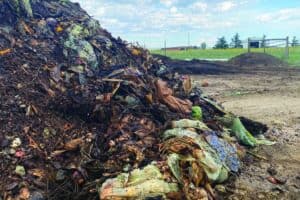Between 2010 and 2014, 21 percent of all crashes nationwide occurred in adverse weather and/or roadway surface conditions each year, according to a study titled, ìMotor Vehicle Crashes, Injuries and Deaths in Relation to Weather Conditions,î published in January 2016 and sponsored by the AAA Foundation for Traffic Safety. On average, 425,103 injuries and 5,137 deaths were reported from those accidents.In a report titled ìEffects of Adverse Weather on Traffic Crashes: Systematic Review and Meta-Analysisî presented at the 87th Transportation Research Board Annual Meeting in 2007, ìSnow can increase the crash rate by 84 percent Ö (and the) injury rate by 75 percent.îCapt. John Lupton with the Colorado State Patrol said most crashes occur because people are driving too fast for the weather conditions. ìIn the state of Colorado, you have to drive at speeds that are reasonable and prudent, per the law,î he said. ìYou have to drive at a speed that allows you to safely control your vehicle.îLupton said intersections are notoriously bad areas because drivers could be coming from a well-plowed road on which they can safely drive at a higher speed, only to enter the intersection where the road has not been sanded or plowed. ìThey turn onto a roadway that is icy and do not approach it slowly enough,î he said. ìAt any intersection during bad weather, assume you are going to have problems stopping; and slow your speed by letting off the accelerator to allow your vehicle to decelerate.îTom Antkow, owner of Drive Safety Consultants Inc. in Colorado Springs and Woodland Park, is a traffic safety specialist and instructor with more than 35 years experience in the industry. He agreed with Lupton, and said speed management is one of the key elements to safe driving. If a driver has to slam on their brakes to avoid hitting another vehicle, they are driving too fast, Antkow said.ìPeople that drive have been trained to be tailgaters,î Antkow said. ìThey have this ëfollow-the-leader-and-stay-in-lineí mentality, where they get in line and whatever they do, they are not supposed to let someone cut in front of them.îThat mentality has led to people driving too closely and not managing the space around their vehicle properly, he said. In good weather conditions, that type of driving can be dangerous, especially for inexperienced drivers, but it is definitely much more dangerous in slick, icy conditions, Antkow said.Antkow, whose daughter was killed by an inexperienced driver three days before Christmas in 1999, said driving experience is a valuable thing in todayís society; where only a small portion of the population is professionally trained to drive. ìDriverís education used to be a school-based program; and, as budgets started getting cut, those programs got cut,î he said.Lupton said knowing your own abilities and acknowledging your limits is a great way to prevent a dangerous weather-related incident. If someone is not a good driver in the snow and ice and they do not have a lot of practice with it, CSP recommends those people stay home and do not drive in bad weather conditions, he said.Even if someone has plenty of winter driving experience, Antkow said his recommendation to people during cold reporting or accident alert times is to avoid driving completely, if possible.Lupton agreed. ìIf you leave your house, you are just one more person that emergency responders may have to respond to,î he said. ìInstead, go out a few hours later or adjust your schedule to wait for the Colorado Department of Transportation to have more time to treat the roads.îLupton cited other important safety tips and preparations:
- Make sure your tires have enough tread; and, if not, get them changed before the bad weather comes.
- Do not attempt to pass a snow plow or drive too closely to it.
- Keep an emergency pack with a few bottles of water, some dry or non-perishable foods, some kind of warning triangle or beacon and a system to charge your cell phone in your vehicle.
- Completely scrape your windshield and all your windows before driving anywhere.
- Be cognizant of road closures, and do not try to pass a road closure sign.
- If you have to pull over, move completely out of the way of other traffic and remain in your vehicle with your seatbelt buckled.
- Do not impede traffic by driving too slowly for the conditions






